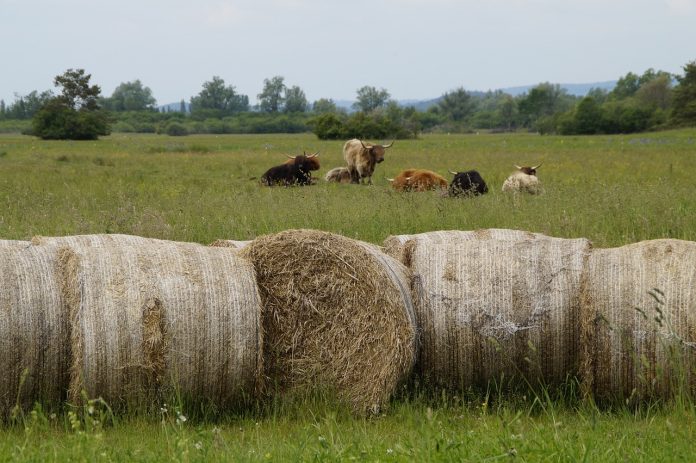Over the last few months, we have been seeing food costs rise. At the same time, the cost of feeding your hay field has risen. Nitrogen prices are now at an all-time high.
While shopping for groceries, we can make choices as to what we will buy and what we will leave on the shelf. Maybe we put the prime rib back and get the ground round. These choices can be made quickly while standing in the grocery store aisle, but can we do this with our hayfields? The short answer is, yes.
Now that we are at the start of winter, you may have a few minutes to consider a plan for the next hay season. You may have more options than you think. The first step is to take a soil sample and see where things stand. This is a great time of year because the testing labs are less busy, and you have time to make a plan before everything gets going in the spring.
No hay
The first option is not to raise hay at all. Turn that field into a pasture and put the cows, sheep or goats on it. Cattle, sheep and goats are great at nutrient recycling. They eat, grow and then leave nutrient deposits all over the place.
You may ask “what about feeding them through the winter? I need hay to feed my animals.”
I would say, “Let someone else do the work and take on the added expense.” Most people undervalue their hay. We’ve done the research. We know the numbers. Fescue hay, for example, has approximately 36 pounds of nitrogen, 14 pounds of phosphorus and 48 pounds of potassium per ton of dry matter.
If you calculate cost per pound of each of those nutrients, you can calculate the value of a ton of hay just in nutrients. This is before you even add in the cost of equipment and labor. The added benefit is that the animals spread someone else’s nutrients on your pasture.
Other sources
The second option is to look for alternative sources of nutrients. This may include poultry litter, pen-pack manure, dairy cleanout or other manure-based waste. You can have the nutrient value tested, or use the averages for that type of manure. Many of these are inexpensive or free, with most of the cost in hauling and spreading.
With this option, you will have to determine how much manure per acre you are spreading. Fortunately, we can teach you how to do this. Just contact your local extension office and ask for the directions. Just remember, we don’t recommend spreading on frozen fields, as there is a potential for nutrient runoff.
No fertilization
A third option is to not fertilize at all. Depending on the current nutrient levels of your fields, this could draw them down and cut the quantity or quality of hay that you will make. It could also completely deplete the nutrients and cause grass dieback. It could also lead to more weeds becoming established. Some weed species thrive in less-than-ideal conditions.
If you choose this option, at the minimum, take a soil test and know where you stand going into next season.
Buying fertilizer
The final option is to go ahead and fertilize the fields. Before going out and buying some fertilizer, you’re going to have to do a little math. Since we know the amount of nutrients that each bale of hay should contain, you can calculate the value of those nutrients. Add in the cost of labor and production and then set your hay price accordingly. You are ready for hay production.
With this option, make sure to get a soil test, book your fertilizer and get ready when spring comes. Whatever option you choose, be sure to take some time this winter to evaluate your fields and your goals. Planning now and preparing for the next growing season will help you make the best decision as you feed your fields.













